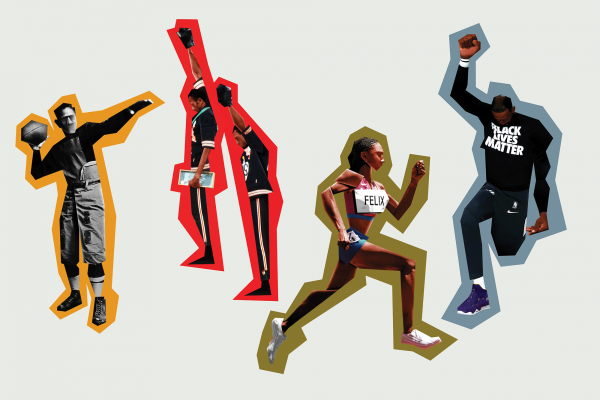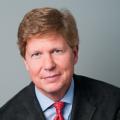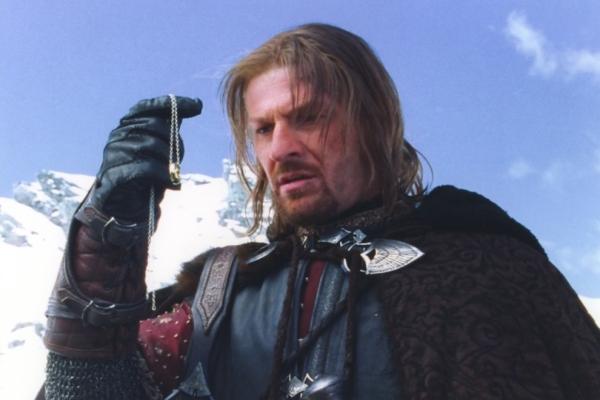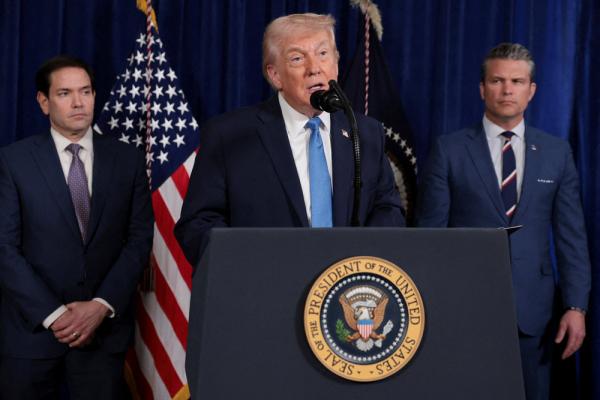EVEN SIX YEARS later, it reverberates as one of the most striking segments on cable television in recent memory. Near the conclusion of her show on Feb. 15, 2018, Fox television personality Laura Ingraham chose to upbraid NBA stars LeBron James and Kevin Durant for their political commentary. She framed her comments as a “jumb dock alert” about the athletes’ “barely intelligible” and “ungrammatical” observations on how then-President Donald Trump was fanning the flames of racism.
“Must they run their mouths like that?” Ingraham asked rhetorically. “It’s always unwise to seek political advice from someone who gets paid $100 million a year to bounce a ball.” Protesting that “millions” voted for Trump to be “their coach,” she continued, “so keep the political commentary to yourself, or as someone said, ‘Shut up and dribble.’”
The segment was remarkable for many reasons, not least because Ingraham later praised NFL quarterback Drew Brees for stating that he “will never agree with anyone disrespecting” the United States flag, a reference to Colin Kaepernick and other athletes who knelt during the national anthem to protest police brutality. Ingraham’s full-throated defense of Brees in the face of criticism? “He’s allowed to have his view about what kneeling and the flag means to him,” she declared. “He’s a person.”
The obvious inference is that neither LeBron James nor Kevin Durant is a person. And when we pause to remind ourselves that Brees is white and James and Durant are African Americans, we plunge once again into the cauldron of sports, race, society, and politics.
Aside from the inherently racist nature of Ingraham’s remarks — she later denied any such intent — the segment is remarkable for the simple fact that a television personality who typically traffics in conspiracy theories and ideological rants devoted an entire segment to sports figures. That attention speaks to the cultural capital of athletes in our society, some of whom have assumed the role that religious figures once played in American life, that of moral conscience.
Sports as an engine for change
THE FOUR MAJOR team sports in North America — baseball, football, hockey, and basketball — all trace their origins, at least in part, to a 19th-century movement called Muscular Christianity. Amid a general concern about men toiling in factories or sedentary office jobs, clergy in the Church of England, noting that women far outnumbered men in the churches, sought to associate Christianity with sports, drawing on the Pauline metaphors of athleticism and militarism — running the race, finishing the course, putting on the full armor of God. A passel of organizations began promoting the affinities between religion and athleticism.
The most familiar group was the YMCA — Young Men’s Christian Association — which began in England and migrated to North America in 1851, first in Montréal and then to Boston later that same year. Christianity and virility took many forms late in the 19th century, including camping and organized team sports. But the best example of Muscular Christianity was James Naismith, a football player at McGill University and a Presbyterian minister who invented the game of basketball while an instructor at the YMCA Training School, now known as Springfield College, where he also played football alongside Amos Alonzo Stagg on a team dubbed Stagg’s “Stubby Christians.”
Basketball, invented in 1891 as Americans were flocking to the cities, is the quintessential urban game because it asks players to maneuver in a constricted space without impeding the movements of others — like negotiating Fifth Avenue at noontime, Times Square in the evening, or Michigan Avenue at rush hour. Naismith also saw basketball as a force for moral instruction, social amelioration, and inclusion. In addition to developing “skills and agile movements,” basketball would foster initiative, cooperation, self-sacrifice, and self-control.
Basketball, and team sports generally, could also function as an engine for social change. Within months of its invention, basketball was played by the women of Smith College, much to Naismith’s satisfaction. While he was both athletic director and dean of the chapel at the University of Kansas — thereby embodying the twin emphases of Muscular Christianity — Naismith mentored John McLendon, an African American and Native American student who would go on to become one of the most successful coaches in college history and the first Black coach of a professional basketball team.
The dangerous work of integration
RACIAL INTEGRATION IN team sports did not always go smoothly, but in many cases racial inclusion on the athletic field prefigured integration in the larger society. Jackie Robinson, for example, broke the color barrier in Major League Baseball more than a year before President Harry Truman’s executive order integrating the nation’s armed forces. The National Basketball Association drafted its first Black player two years after the Harlem Globetrotters defeated the NBA champion Minneapolis Lakers in an exhibition game and five years before the murder of Emmitt Till, generally considered the catalyst for the civil rights movement.
But the path was never easy. Robinson endured insults, abuse, and threats, as did Hank Aaron as he approached Babe Ruth’s home run record. Although the National Football League was integrated from its earliest days — Jim Thorpe, a Native American, was the first president, and Fritz Pollard the first Black player — at the conclusion of the 1933 season, the NFL owners instituted a color line that remained in effect until 1946.
Despite episodic advances in the desegregation of college football, Jim Crow maintained a tenacious hold in the South. Greg Page helped break the color barrier in the Southeastern Conference when he, along with teammate Nate Northington, walked onto the practice field for the University of Kentucky in 1967. In filling out a questionnaire, Page wrote that he had chosen Kentucky “to help open the way for more Negro athletes.” But Page’s triumph was short-lived. His teammates piled on Page during a practice drill, breaking his neck; he was paralyzed and died 38 days later.
Defining the line between honest competition and racial targeting is always difficult in any sport, but doing so is especially challenging in a sport where violence is embedded in the game itself. In a 1903 Ivy League game, for instance, a crushing tackle broke Mathew Bullock’s collarbone. A Princeton player acknowledged that the tackle was meant to remove the Dartmouth receiver from the game — not, he insisted, because Bullock was Black, but because he was the best player on the field. Twenty years later, Jack Trice, the first African American athlete at Iowa State University, suffered fatal injuries in 1923 during his initial football game. Author Steve Jones, who wrote a book about Trice, has said, “We don’t know if it was an accident or if it was because he was his team’s best player or if he was hurt because he was an African American.”
Sometimes the attacks were blatant. By the time Johnny Bright and his Drake University teammates took the field to play Oklahoma A&M College (now Oklahoma State University) in Stillwater on Oct. 20, 1951, the home team was gunning for the Bulldogs’ star quarterback, who had broken the NCAA’s career rushing record the previous year and was a favorite for the Heisman Trophy, college football’s highest honor. According to some accounts, the Oklahoma A&M coaching assistants enjoined their players in the week leading up to the Stillwater game to “get that n-----.” Both the local newspaper and the student newspaper reported that Bright was a marked man. Three times in the opening seven minutes, Wilbanks Smith, an Oklahoma A&M lineman and team captain, crashed his forearm into Bright’s face — after the quarterback had handed off the ball and was observing the play. The third hit shattered Bright’s jaw. The Tulsa Daily World reported that Smith “hit Bright with such force that both his feet were off the ground.” A sequence of photographs published the following day in The Des Moines Register established both the intent and the effects of the blow.
“You never hit a person that many times unless you do it on purpose,” Bright said. Piling insult on top of injury, a ticket agent at the Stillwater station refused to allow the injured Bright to sit with his white teammates on the ride home.
The success of the Alabama Crimson Tide in 1961 — 11 consecutive victories and a 10-3 win over Arkansas in the Sugar Bowl — took place against the backdrop of the civil rights movement, especially the violent clashes between segregationists and Freedom Riders in Anniston, Birmingham, and Montgomery, Ala., during the summer of 1961. Not a few white Alabamians reckoned Alabama’s success on the gridiron that fall as validation for the “Southern way of life,” a euphemism for racial segregation, and they applauded the legendary Crimson Tide coach, Paul “Bear” Bryant, for holding the line against integration. “Your men stood like Stonewall Jackson,” Frank Boykin, a member of Congress from Mobile, wrote to Bryant at season’s end. “There was so much joy, there was so much pleasure that you gave all of the home folks and people all over the South and people all over this Nation that want us to keep some part of our way of life.”
Even after George C. Wallace’s failed histrionic “stand in the schoolhouse door” in Tuscaloosa on June 11, 1963, which resulted in federal troops arriving to integrate the University of Alabama, Bryant still refused to integrate the Crimson Tide. The 1965 team was voted national champion for the third time in five years — but the Crimson Tide finished third in the voting the following year, despite another undefeated season.
Toward the end of the 1960s, Bryant moved slowly toward the integration of his football team. In 1967, he invited Black high school coaches to his summer coaching clinic in Tuscaloosa, although he also assured the university’s president that he would not sign African American athletes anytime soon. “We have not actively attempted to recruit any colored athletes in the State because we have none that we felt qualified both academically and athletically,” he said. By 1969, however, with his own program in decline, and with five of the 10 Southeast Conference teams having signed Black players, Bryant needed fresh talent. Wilbur Jackson, of Ozark, Ala., became the first African American recruited to the Alabama football team in 1970, the same year that Reuben Askew of Florida, Dale Bumpers of Arkansas, and Jimmy Carter of Georgia were elected governors of their respective states and emerged as the face of the New South.
The tide of racial integration finally washed over college football in the Old South. Bryant’s approach to integration was cautious and tepid, and in choosing that course he missed a prophetic opportunity. As fellow Alabamian George C. Wallace dispatched Alabama state troopers to the Edmund Pettus Bridge with orders to stop the march from Selma to Montgomery, Bryant considered inviting Black coaches to his coaching clinic in Tuscaloosa. As Wallace was gearing up for his “states’ rights” campaign for the presidency, Bryant instructed his players to comport themselves as Southern gentlemen in their Sugar Bowl game against the integrated University of Nebraska team.
Yet, just as sports fans like to conjecture about counterfactual scenarios — what if the referee hadn’t called pass interference or suppose the running back hadn’t fumbled on third and goal — it’s tempting to speculate about how the history of Alabama, or the South in general, might have unfolded differently if Bryant had taken an earlier, more courageous stand for racial integration. The Crimson Tide coach had risen to the status of demigod by the mid-1960s. His would have been a powerful voice in a racially troubled time.
Prophetic Modern Athletes
WHEREAS BRYANT MISSED his opportunity to exercise a prophetic voice, many athletes in recent years, especially athletes of color, have stepped into that role. At a time when Americans are turning away from religion, sports fandom, judging by the metrics of attendance and television and sports radio ratings, has arguably emerged as a new religion in North America. Many athletes have become arbiters of morality. Not so long ago, we looked to religious figures — Dorothy Day, Reinhold Niebuhr, Martin Luther King Jr., Abraham Joshua Heschel, and others — for moral guidance. Now we hear from sports figures like LeBron James or Colin Kaepernick, who must surely be regarded as a martyr for having effectively sacrificed his professional career to stand against racial injustice.
The parallel is not entirely accurate. Unlike the earlier prophets, whose voices were rooted in theological reflection and religious conviction, the new oracles of the arena respond to injustice as though it were a physical assault, something they know well. Their actions may be premeditated, but they are also at some level visceral and tactile, speaking and enacting a truth similar to that in the opening verse of 1 John — something “which we have heard, which we have seen with our eyes, which we have looked at and our hands have touched.” They proclaim “what we have seen and heard.”
The world of sports, the closest thing to a meritocracy in our society, functions as both a bellwether and, at its best, a catalyst for social change. It also increasingly provides a forum for prophetic voices, albeit different from those of the past.
The congregations are different as well — larger, louder, more devoted, and more connected. No wonder ideologues like Laura Ingraham regard these athletes as a threat. No wonder she wants them to shut up and dribble.

Got something to say about what you're reading? We value your feedback!







